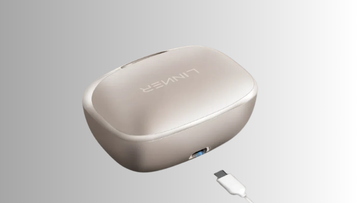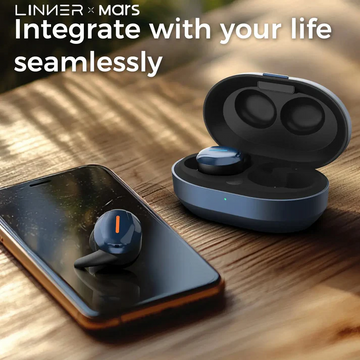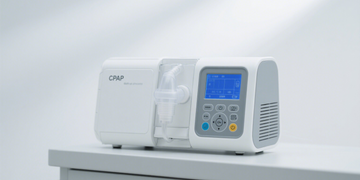Hearing aids improve the quality of life for 48 million people. However, one very important factor determines their lump: battery life. How long do hearing aid batteries last? Let’s try to understand. This will help you plan better and eliminate interruptions that break communication between people.
In this post, you will also understand the different types of batteries out there for hearing aids, how long these last, and how to know your battery is dying.
Understanding Hearing Aid Battery Types
Hearing aids use either disposable zinc-air batteries or rechargeable lithium-ion cells. Considering the benefits of each type can help you choose the best one for your requirements.
Disposable Batteries (Zinc-Air)
They are the tiny little button cell batteries with an outer coating that turns on only when in contact with air. The battery starts working after removing the battery touch protective sticker. They are not rechargeable and need replacement every couple of days, depending on use.
The most common sizes include:
Yellow (Size 10): The smallest size, to work with mini in-the-ear devices.
Size 312 (Brown): Most common size used with behind-the-ear (BTE) and in-the-canal (ITC) aids
Size 13 (Orange): It is used in larger behind-the-ear hearing aids.
Size 675 (Blue): Designed for high-power hearing aids
Zinc-air batteries are lightweight and cheap, but they do not last as long and have to be constantly replaced.
Rechargeable Batteries
Today, the majority of hearing aids have a lithium-ion rechargeable battery. Consequently, you won't have to spend as much time replacing batteries. All you need to do is drop it in its charger at night, and you are good to go the following morning.
Rechargeable batteries have a maximum life of about 3-5 years, and depending on use, will last from 18-30 hours per charge. It's friendly and more convenient for daily usage.
How Long Each Battery Type Typically Lasts
How long do hearing aid batteries last? Battery life depends on different things. Here's a quick reference table:
|
Battery Type |
Typical Life Span |
Used In |
|
Size 10 (Yellow) |
3-5 days |
Small in-ear aids |
|
Size 312 (Brown) |
5-7 days |
Mini behind-the-ear |
|
Size 13 (Orange) |
6-10 days |
Behind-the-ear aids |
|
Size 675 (Blue) |
9-16 days |
Cochlear implants |
|
Rechargeable (Li-ion) |
18-30 hours per charge |
Most modern digital aids |
Signs You Need to Replace Your Hearing Aid Battery
Knowing when to change your hearing aid battery can save you from the frustration of sudden silence or poor performance. Here are the most common signs that your battery is running low or your device may be due for an upgrade:
Sound quality is weak or distorted – If audio becomes muffled or unclear, it could be due to a dying battery.
Frequent power shutdowns – Your hearing aid may turn off even when properly inserted, often without warning.
Volume needs constant adjustment – If you're frequently increasing the volume to hear clearly, the battery might be weakening.
Inconsistent performance – Signals may cut in and out, or you might experience brief moments of silence.
Low-battery warning signals – Many modern hearing aids give an audible or visual cue when battery power is low.
Batteries die more frequently than before – If your battery life seems to be shrinking over time, it may not just be the battery; your device could be aging.
Tip: If you find yourself changing batteries far more often than the manufacturer suggests, or if rechargeable batteries aren’t holding a charge like they used to, it might be time to consider upgrading your hearing aid. Older models can draw more power and may not support the latest battery efficiency features.
Which Battery Type Suits You?
When selecting the right battery type for your hearing aids, it's not just about size or capacity—it's about how well the battery fits into your lifestyle. Whether you're always on the move, prioritize convenience, or use hearing aids occasionally, there's an ideal solution for you.
Choose Rechargeable Batteries if you:
Use your hearing aids daily, often for long hours
Prefer the simplicity of charging overnight like a smartphone
Don’t want to constantly carry spare batteries
looking for a more environmentally friendly and cost-effective option
Want a long-term investment with less frequent maintenance.
Choose Disposable Zinc-Air Batteries if you:
Use your hearing aids occasionally or only during certain activities
Prefer traditional-style devices or have specific model compatibility
Don’t mind changing batteries every few days
Are looking for lower up-front costs
Need the smallest-sized hearing aids, such as completely-in-canal (CIC) devices

Best Hearing Aids with Reliable Battery Performance
If battery performance is your top priority, choose one of the Best OTC Hearing Aid options like LINNER. A brand known for its powerful and user-friendly OTC hearing aids. Let’s try to find out the best hearing aids with reliable battery performance:
Linner Mercury
A full 2-hour charge gives up to 20 hours of battery life.
16-channel WDRC, original ONSEMI™ Chip(USA)
Advanced noise reduction technology
Nearly invisible receiver-in-canal (RIC) design
Come with a portable charging case
Appropriate for mild through to profound hearing loss
Why It Stands Out:
Linner Mercury, is the best ric hearing aid and the most powerful OTC hearing aid by LINNER. It’s designed for users who need reliable, high-performance sound throughout the day. With fast charging and long battery life, Mercury keeps you connected without disruption.
Linner Saturn Series
A full 24-hour battery life on a single charge
10 hours plus 3 additional charges for a total of up to 96 hours of use
Wearable, so discreet, 100% invisible
16-channel WDRC with feedback control
Professional Clear sound with Advanced Noise Reduction
Prescription-free, FDA general use OTC device
Suitable for slight to moderate hearing loss
Why It Stands Out:
The Linner Saturn series delivers powerful results in a small package. Perfect for users who want subtlety without sacrificing sound quality. The cic hearing aids are a great choice for travel or long days away from home. First-time users especially appreciate its simplicity and comfort.
Pro Tips for Extending Hearing Aid Battery Life
It doesn’t matter whether you choose disposable or rechargeable hearing aids; simple habits can extend your battery’s life and keep your device performing efficiently.
For Disposable Batteries:
Let the battery breathe
After peeling off the sticker, wait at least 5 minutes before inserting the battery. This helps activate it fully.
Open the battery door at night
This reduces moisture buildup and preserves battery power.
Turn off the hearing aid when not in use
Save energy during breaks or downtime.
Store in a cool, dry place
You have to avoid exposing batteries to heat or humidity, which can shorten their life.
For Rechargeable Batteries:
Charge your aids every night
To start charging, don’t wait until the battery fully dies.
Avoid overcharging
After charging the battery, unplug the device or case.
Use the original charger
Avoid third-party chargers that may affect battery life.
Clean your hearing aids regularly
Dust and earwax can affect power flow and battery efficiency.

Conclusion
How long will your hearing aid battery last? The answer varies depending on the battery and how you use your hearing aid.
Lithium disposable batteries can last 3-16 days, depending on the size of their power capacity or the consumption rate of the wearer.
Rechargeable lithium-ion batteries (like those in Linner Mercury and Linner Saturn) provide 20 to 24 hours of continuous use on a single charge.
By watching for early warning signs and following smart battery care practices, you can enjoy uninterrupted hearing and prolong your device’s battery life.
To sum up, if you need a durable hearing aid with great battery life at an attractive price point, then Linner Mercury and Linner Saturn are two promising offerings. Featuring a 45-day at-home free trial, 1-year warranty, and no-cost worldwide shipping, these hearing aids provide the upmarket user experience without the high cost.
Read more:







![Linner Mercury Clarity OTC Hearing Aids [FSA & HSA Eligible] Linner](http://www.linnerlife.com/cdn/shop/files/Linner-Mercury-Clarity-OTC-Hearing-Aids-_FSA-_-HSA-Eligible_-Linner-110038953.webp?v=1725853434&width=360)

![Linner Mars OTC Hearing Aids [FSA & HSA Eligible] Linner](http://www.linnerlife.com/cdn/shop/files/Linner-Mars-OTC-Hearing-Aids-_FSA-_-HSA-Eligible_-Linner-110039213.webp?v=1725865495&width=360)
